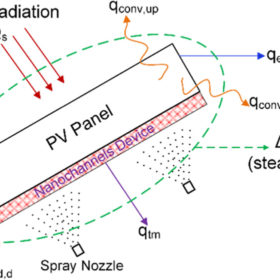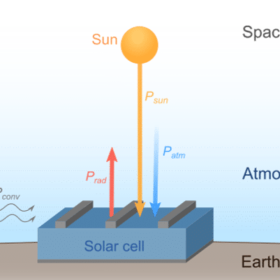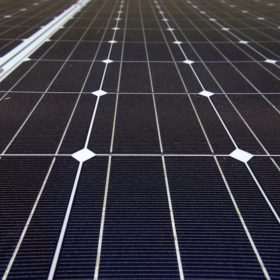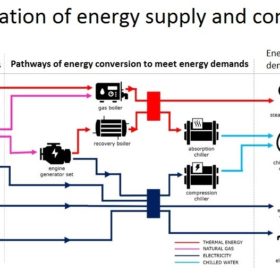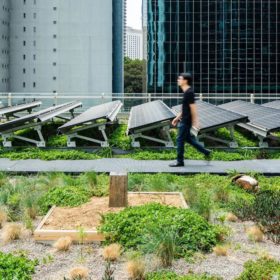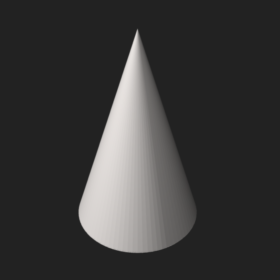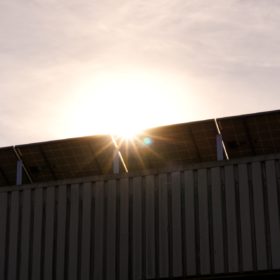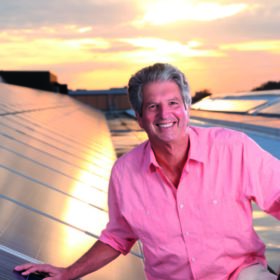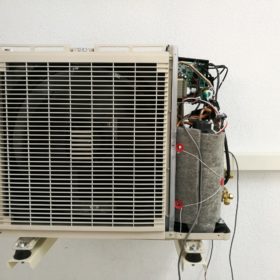New solar module cooling tech based on porous nanochannels
US scientists have utilized a nanochannels device to cool down the operating temperature of a commercial PV module and have found that the proposed technique is able to improve power yield by up to 32.8%. Spray droplets are dispersed over the nanochannels device in order to eliminate the need for a continuous supply of a coolant.
Photovoltaics for electric cooling
According to new research from Sweden, solar PV might be cost-competitive in powering electric cooling for an investment cost ranging from $165/kW to $480/kW in hot-climate countries such as Brazil, Spain, India and China, among others. The study focused on the cooling demand for the residential sector, where most of it is expected to originate.
Radiative cooling for PV modules – challenges and prospects
A group of international scientists has investigated the potential use of radiative cooling in PV systems, in a newly published review focusing on challenges and opportunities for the passive cooling technology.
Cooling PV panels with water and cotton mesh
Scientists in Russia have developed an active cooling technique that spreads water on both sides of the module and uses a cotton wick mesh to absorb and spread the water that comes on the rear side. The system is able to reduce significantly a module’s operating temperature and lead to an overall improvement of 30.3% in its output power.
Mathematical model to couple PV, wind with cooling-heating-power systems
Brazilian researchers have proposed a new mathematical model to change parameters for wind and solar resources and different levels of energy demand. The model was originally conceived for tropical regions, but it can actually be used in any location. The new methodology models a highly complex system featuring wind turbines and PV modules, as well as solar collectors, fuel lines, gas boilers, engine-generator sets, recovery boilers, absorption and compression chillers, and grid electricity.
Green roof improves solar panel efficiency by 3.6% on average
The comparison of two solar cladded roofs in Sydney, Australia, one bare beneath its panels and the other adorned with native grasses and plants, has found the panels on the green roof were, on average, 3.63% more efficient, producing an average daily output 13% greater than the conventional roof. The improvements are believed to stem from the lower temperatures on the green roof, thanks to its plants – which also provided a plethora of additional benefits.
Conical-shaped solar panels cooled by forced airflow
A group of international scientists has compared the hypothetical performance of three novel shapes of solar modules – pyramidal, hexagonal and conical – and has found the latter has the strongest potential in terms of thermal behavior. According to their findings, a cooling technique based on forced airflow is key to making these solar module shapes into a feasible solution.
Nano-micro-scale cooler for solar modules
The proposed technique is based on radiative cooling and consists of a glass coating made with a two-dimensional subwavelength nanostructured grating, which is imprinted in soda-lime glass and has enhanced mid-infrared emissivity, and a micro-structured grating. The temperature decrease provided by the nano-micro-grating coating was found to be approximately up to 5.8 degrees Celsius.
Vortex generators and glass texturing for solar module cooling
New research from Australia has shown that vortex generators and glass texturing have so far proved to be the most effective solutions among the novel methods explored for lowering the temperature of solar panels.
Key indicators to identify the best photovoltaic heat pump
Researchers in Spain have compiled a list of key performance indicators intended at evaluating not only the quality of a heat pump or a PV generator; but also the quality of their integration. pv magazine spoke to research co-author Celena Lorenzo about the potential and challenges of this combination. According to her, heat pumps powered by PV alone are efficient enough for both cooling and heating.
